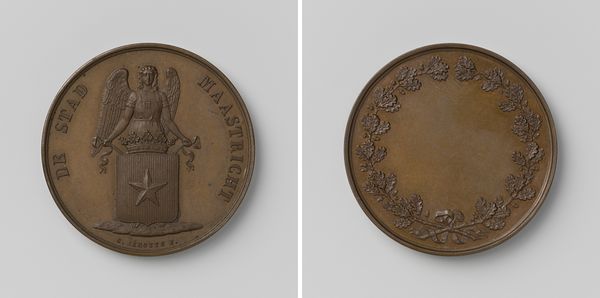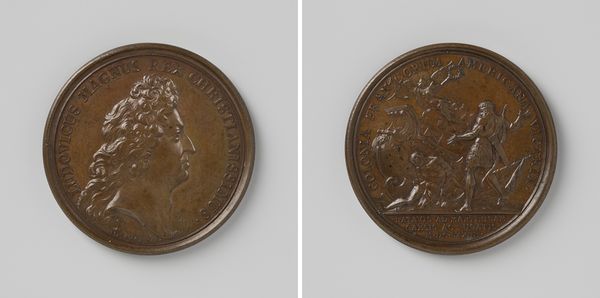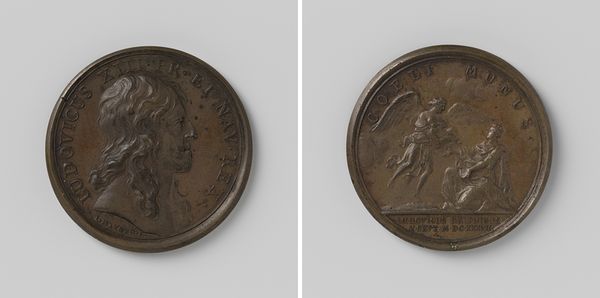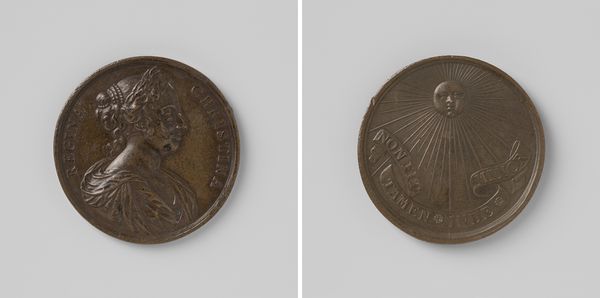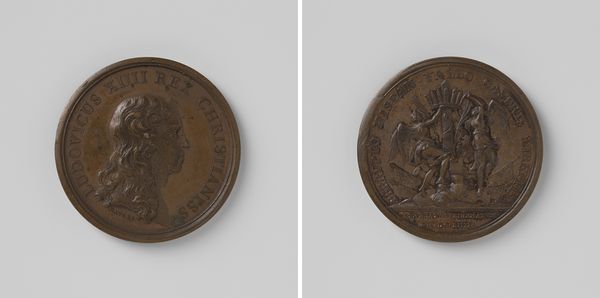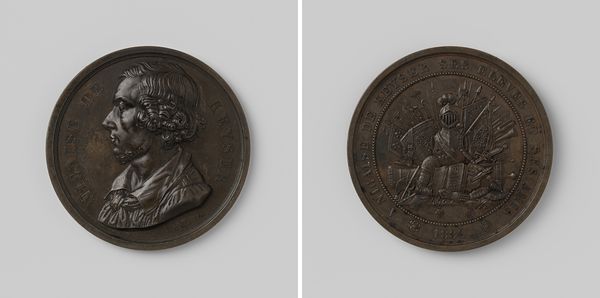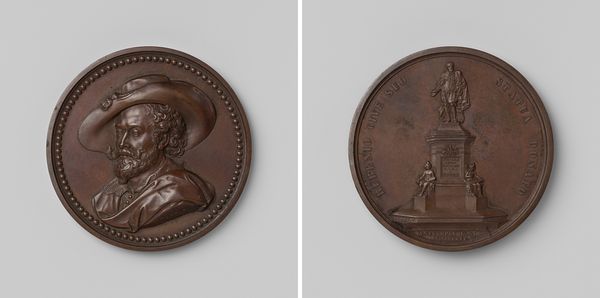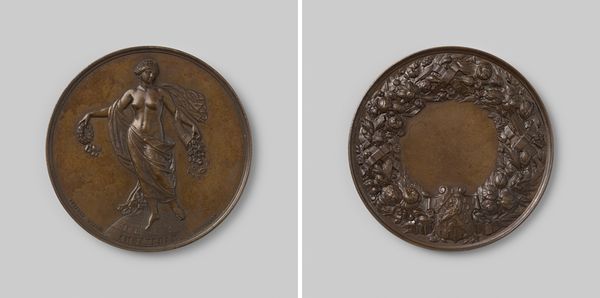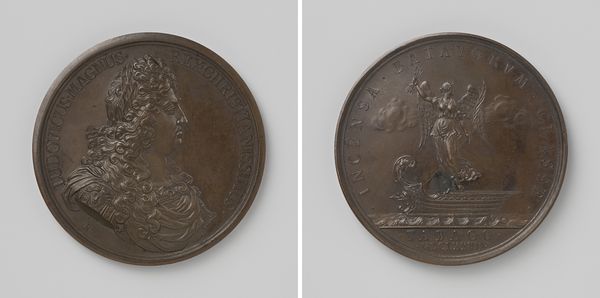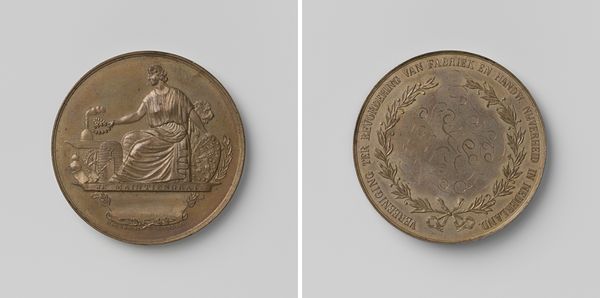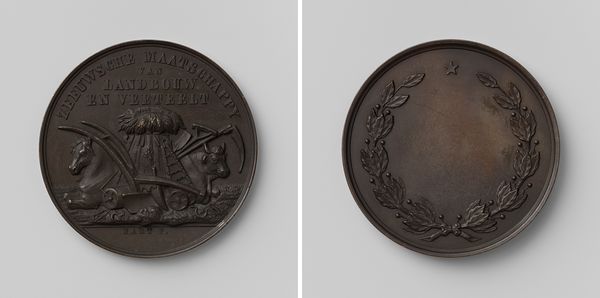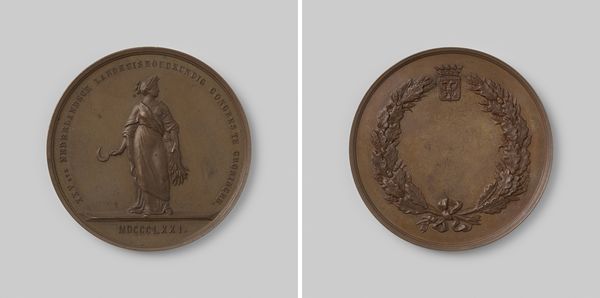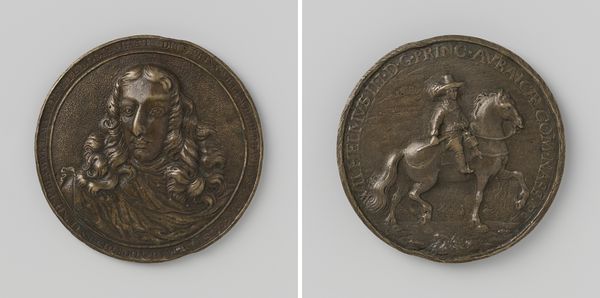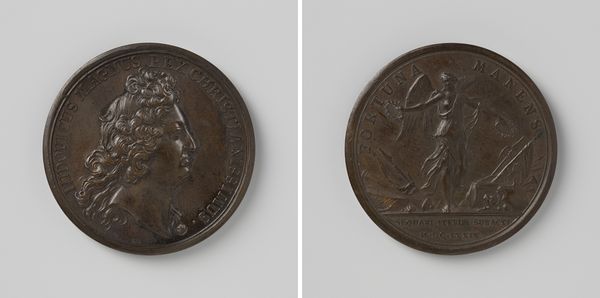
metal, relief, bronze, sculpture
#
portrait
#
neoclacissism
#
metal
#
sculpture
#
relief
#
bronze
#
figuration
#
geometric
#
sculpture
#
ceramic
#
history-painting
Dimensions: diameter 4.3 cm, weight 33.62 gr
Copyright: Rijks Museum: Open Domain
Curator: This striking bronze relief is entitled "Vereeniging Nijverheid te Leeuwarden", created anonymously in 1859. My initial feeling is one of restrained power; the dark metal lends the work an archaic solemnity. What do you think? Editor: The term archaic certainly springs to mind; the imagery strongly harkens back to neoclassicism. But seeing this kind of symbolism, so literally celebrating industrial progress, gives me pause. What narratives are being privileged, and whose labor is being made invisible here? Curator: Well, considering its time of creation, it certainly represents an idealistic vision. It depicts a classically styled woman alongside a spinning wheel, referencing the rising textile industry, and bundles representing local produce in Leeuwarden. We need to remember the powerful drive to improve society at that time. Editor: I agree that the historical context is vital. However, this drive for societal "improvement" often meant exploitation, particularly of working-class women and people of color, throughout the Dutch colonies and beyond. Is it really celebrating the union of industry in this city, or is it erasing some voices and privileging the voices that are doing the exploiting? It would also be important to explore the background of whoever sponsored its making. Curator: Certainly. The symbolic choice of bronze too must have a meaning, connecting the industry of the day with the classical past. Also note that it includes a wreath of produce. The city wanted to celebrate the success and richness in its bounds and looked to historical precedent for artistic expression, just as was popular in other artistic centers in Europe at that time. Editor: Right. Understanding these power structures can deepen our appreciation of even seemingly innocuous works, no? What did prosperity truly signify for diverse inhabitants across different intersectional boundaries? What political message was this commissioned medal hoping to communicate? Curator: Indeed. Understanding the purpose and audience certainly contextualizes a piece. Next time you pass by a work of art that seems purely aesthetic, let's ask ourselves whose story is being told—and whose might be missing. Editor: Absolutely, let's keep unearthing the layers beneath. Thanks.
Comments
No comments
Be the first to comment and join the conversation on the ultimate creative platform.
